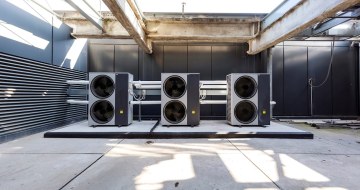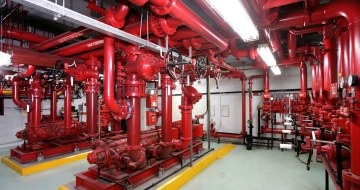
August 8, 2024 in Advisory Notes
Operational Analytics and Data Driven Maintenance (DDM)
Mould plays an important role in the natural environment as a break-down mechanism for dead organic matter. In the built environment, it is an unwante...
July 10, 2015
State and Territory laws require building owners and occupiers to provide a safe environment for all building occupants, whether they are employees, visitors or service providers attending the site to perform maintenance or other works.
Designers of buildings and building services also have a statutory responsibility to assure that facilities are designed to be safe for future owners, occupiers and service providers.
What constitutes a safe environment?

Guidelines for safe workplaces are set out in Codes of Practice and Guidance Notes available from the relevant State or Territory Work Health & Safety authorities. Contact details for these organisations can be found at Safe Work Australia: http://www.safeworkaustralia.gov.au.
Common safety considerations for service providers visiting buildings to carry out maintenance or other similar tasks include:
The increasing use of Building Information Modelling in design, construction and facilities management is providing an effective tool for the establishment, evaluation and ongoing management of these safety considerations throughout the building lifecycle.
Work Health & Safety Requirements
Maintenance provider organisations have a legal obligation to provide safe working conditions for their personnel. These organisations should have Workplace Health & Safety policies and procedures in place that require risk assessments to be completed prior to commencing work onsite and prohibit their personnel from going into environments deemed unsafe until appropriate measures are in place. This may preclude maintenance and other activities being carried out when required.
Service providers working in unsafe situations put building owners and occupiers at risk of prosecution and litigation in case of accident or injury.
download pdf
August 8, 2024 in Advisory Notes
Mould plays an important role in the natural environment as a break-down mechanism for dead organic matter. In the built environment, it is an unwante...

June 24, 2024 in Advisory Notes
Mould plays an important role in the natural environment as a break-down mechanism for dead organic matter. In the built environment, it is an unwante...

April 30, 2024 in Advisory Notes
A lot has changed since A.G. Coombs released our first Advisory Note on heat pumps back in 2018. Increasingly, asset owners are no longer asking if he...

March 12, 2024 in Advisory Notes
Building owners and facility managers often don’t have access to a full set of accurate documentation for of their buildings to support effective an...